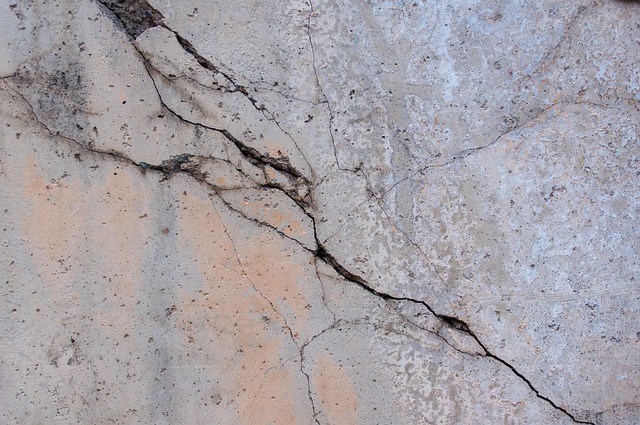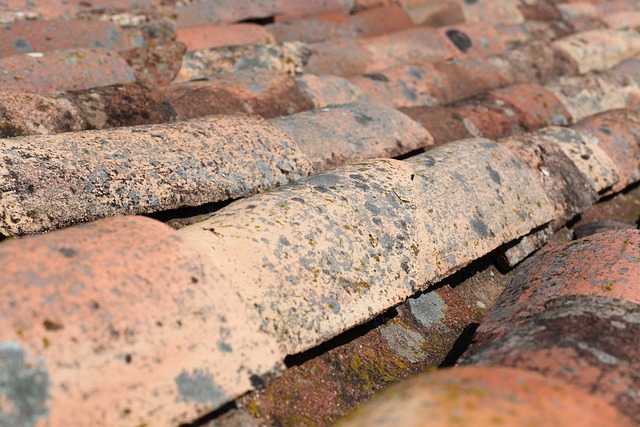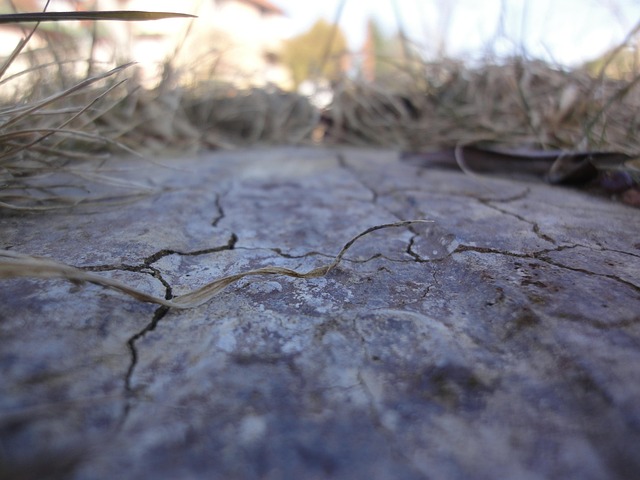Concrete cracks, caused by material properties, environmental factors, and structural stress, require specific attention for effective repair. Types include structural, surface-level, and fissures, each demanding unique approaches to prevent further damage. Prompt repair is crucial to maintain integrity and prevent water penetration, fungal growth, and accelerated deterioration. Using correct materials and techniques, such as cold-patching compounds or polymer-modified products, ensures durable results. Proper cleaning, mixing, and application are key, with light sanding for a smooth finish. Avoiding common mistakes like using incorrect materials and inadequate preparation is essential. Regular maintenance, including cleaning, sealing, coating, and inspections, prolongs crack repair durability.
Concrete cracking is a common issue, but timely crack repair is essential for structural integrity and aesthetic appeal. This comprehensive guide delves into the world of concrete patching and crack repair, covering everything from identifying crack types and understanding their causes to choosing the right materials and techniques. We’ll walk you through the step-by-step process, offer tips to avoid common mistakes, and share best practices for maintaining your repaired concrete, ensuring long-lasting results.
Understanding Concrete Cracks: Causes and Types

Concrete cracks can range from tiny hairline fractures to large, visible splits, and understanding their causes is essential for effective crack repair. These cracks develop due to various factors, primarily related to material properties, environmental conditions, and structural stress. One common cause is freeze-thaw cycles, where water seeps into concrete, freezes, expands, and then thaws, leading to surface and structural damage over time. Another significant factor is drying shrinkage; as concrete sets and hardens, it shrinks slightly, creating small cracks if not managed properly during placement.
There are several types of concrete cracks, each requiring specific attention for crack repair. Structural cracks, often caused by settling or load-bearing stress, can be serious and may indicate underlying issues with the concrete’s integrity. In contrast, hairline cracks are typically surface-level and result from minor stresses or temperature fluctuations. Fissures, on the other hand, are wider gaps that can form due to differential settlement or movement of nearby structures, requiring prompt crack repair to prevent further damage and instability.
The Importance of Prompt Crack Repair

Concrete cracking can seem like a minor aesthetic issue, but it’s essential to address cracks promptly for structural integrity and longevity. Even small cracks have the potential to grow larger over time, leading to more extensive damage and costly repairs. Prompt crack repair is crucial because it prevents water penetration, which can cause further weakening of the concrete.
Left unrepaired, cracks create an entry point for moisture, facilitating the growth of harmful fungi and bacteria. This can lead to not only unsightly discolouration but also structural deterioration. Regular maintenance and prompt crack repair are vital to ensure that any damage is mitigated early on, preserving the integrity of surfaces and prolonging their lifespan.
Materials and Techniques for Effective Patching

When it comes to concrete patching and crack repair, the right materials and techniques are essential for long-lasting results. First, choose a high-quality patching compound designed specifically for concrete. This can be either a cold-patching material or a polymer-modified product, depending on the extent of the damage. Cold patches are ideal for small cracks as they set quickly, while polymer-modified compounds offer superior strength and elasticity for larger repairs.
Techniques vary based on crack size and depth. For shallow cracks, a simple troweling method involves cleaning the area, applying the patching compound, and smoothing it with a straight edge. Deeper cracks may require a more intricate process, such as chiseling out the damaged concrete and creating a form to hold the new material in place until it sets. This ensures a strong bond and prevents further crack propagation.
Step-by-Step Guide to Concrete Crack Repair

Repairing concrete cracks is an essential task for maintaining the integrity and aesthetics of your surfaces. Here’s a step-by-step guide to help you tackle this project effectively. Begin by cleaning the crack area thoroughly, removing any loose debris or dirt using a wire brush. Next, mix a suitable epoxy or concrete repair compound according to the manufacturer’s instructions. Ensure the mixture is consistent and easy to apply.
Apply the repair compound to the crack using a putty knife, filling it completely while maintaining a slightly higher level than the surrounding concrete to allow for settlement. Smooth the surface with the blade for an even finish. Let the compound cure as per the product guidelines before examining your work. You may need to lightly sand or re-apply the patch if the final result isn’t smooth and seamless, ensuring a professional repair job.
Common Mistakes to Avoid During the Repair Process

When it comes to concrete patching and crack repair, there are several common mistakes that homeowners and DIY enthusiasts often make, which can compromise the effectiveness of the repair and even lead to further damage. One of the most frequent errors is trying to fix cracks that are too wide or deep. Concrete cracks wider than 1/4-inch (or 6 mm) should be addressed by a professional as they may indicate structural issues. Attempting to patch these extensive cracks without proper expertise can result in an unstable surface.
Another mistake is neglecting preparation. Before applying any repair compound, the area must be thoroughly cleaned and degreased to ensure optimal adhesion. Using the wrong patching material is also a common blunder; using a general-purpose filler might not withstand the elements or traffic, leading to early deterioration. Always choose a high-quality concrete patch or crack repair product suitable for external use, and follow the manufacturer’s instructions for the best results in crack repair.
Maintaining Your Repaired Concrete: Tips and Best Practices

After successfully repairing concrete cracks, proper maintenance is key to ensuring longevity and preventing future damage. One of the best practices is to keep the repaired area clean and free from debris. Regularly sweeping and rinsing the surface helps remove dirt and grime that could impact the repair’s durability. Avoid excessive water exposure; while moisture is necessary for initial curing, prolonged wetness might weaken the repair.
Consider applying a sealer or protective coating over the patched cracks to shield them from environmental factors like UV radiation, extreme temperatures, and chemicals found in common household cleaners. These measures, coupled with routine inspection, will help you identify any new cracks early on, allowing for prompt crack repair and maintaining the overall health of your concrete surface.
